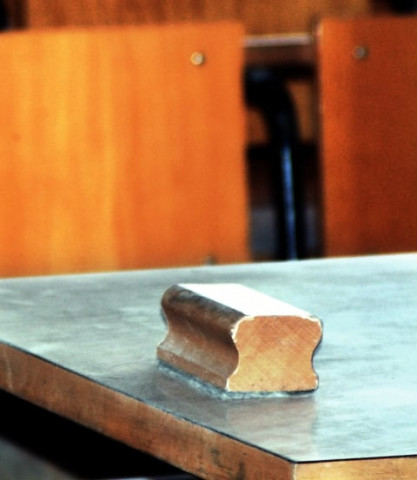Mohmand Agency: 89 schools, colleges lost to militancy in three years
Teachers receive death threats, amid mass migration leaving classes empty.

Over the last three years, 89 educational institutions have been lost due to militancy and the so-called ‘War on Terror’, according to data obtained from the Fata education department. The money required for their reconstruction amounts to approximately Rs436.5 million.
The destruction of these institutions has affected the education of around 10,000 students, male and female.
In Mohmand, the area which suffered the most violence was the Safi subdivision, where 47 educational institutions were destroyed. In the Khwezai and Baizai subdivisions, 18 schools were destroyed, while 11 schools were obliterated in the Ambar subdivision of lower Mohmand Agency, six in Pindyali and four in Ekkaghund.
In the agency’s headquarters, Ghallanai, only two schools have been destroyed. In Prang Ghar subdivision, one school was destroyed, and this was due to the 2010 flood.
Difficult circumstances
Contradictory claims also emerge as to how much reconstruction has actually taken place. While many NGOs claim that they have carried out substantive work in the area, the agency’s education department says that only a few tents have been provided by these organisations. These remain scarce, resulting in students studying in the open in harsh conditions, whether it’s summer or winter.
A teacher from the Safi subdivision told The Express Tribune on condition of anonymity that in spite of the attacks that had already taken place on schools and colleges, security measures had not been improved. Many of these teachers have received death threats. Landmines in the area were also a security threat. It was also difficult to find non-locals to teach in the schools, since residents were unwilling to let them stay in the locality because of the danger they posed as targets of violence.
There is more evidence that there is little support from the federal or local government for these besieged educational institutions. One community school teacher named Khanadan said that in the Baizai subdivision and other areas, many teachers had not been paid for the last six months.
Most of these teachers are instructing almost-empty classrooms. A resident of Lakhkar Kallay said most of the residents of his village had migrated from the area due to the poor law and order situation.
Government’s attempts
Agency Education Officer Said Mohmand, however, had another story to tell about the agency’s efforts to put education back on track. He said the department was trying its best to provide basic amenities to the schools.
He also said there were several inaccessible areas in the agency where infrastructure had been destroyed, and the teachers, particularly the female teachers, had no alternative arrangements to stay there, as they used to live at the houses of local chieftainsor in small house extensions.
Assistant Education Officer of the Safi and Baizai subdivisions, Dast Ali, said they were providing flour and oil to the students, particularly in schools for girls, adding that this step helped them increase enrolment.
Khyber-Pakhtunkhwa Governor Masood Kausar, while replying to the demand of a tribal Jirga in Ghallanai recently, said that the government was in contact with foreign donors for assistance in the reconstruction activities.
Published in The Express Tribune, March 12th, 2012.


















COMMENTS
Comments are moderated and generally will be posted if they are on-topic and not abusive.
For more information, please see our Comments FAQ